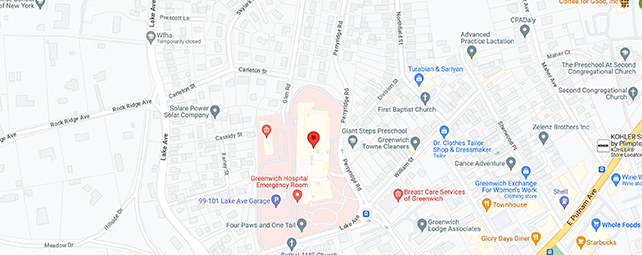
Some 10 years ago (not long after my WLS) when I broached the idea with my own surgeon about launching a website and writing a book for bariatric patients he was very keen. Why? Well, because he thought there was a fundamental need to try and educate post-ops, not only on what they could eat after surgery, but also demonstrate to them how this could still be delicious food. I agreed but also wanted to ensure that they could also eat with family and friends too.
I was more than keen to do that because I didn’t want to put my own family through yet another diet that meant I would eat separately from them and not take part in what is more than just the sharing of food. Mealtimes are much more than that – they are golden opportunities to chat through successes and failures, share news, discuss everyday events (some serious, some trivial), and generally show respect and care for one another. All too often these things are lost along the long and lonely road of diet deprivation and I wanted it to STOP! Once and for all.
And while accepting that the early stages of post-op eating are not necessarily convivial to ‘round-the-dining-table’ affairs, the final one, which I call ‘food for life’ most certainly is.
There is no need to ditch family mealtimes and catch-up meal occasions with friends and colleagues, where conversation, connection and cuisine (my 3 c’s) are paramount – such times just require a little more planning, preparation and adjustment. The way forward with these means that no one should feel excluded or isolated (haven’t we had enough of that lately?) while eating well post-op.
I would even go as far as to say that some families even eat better when a combined approach is adopted. It’s also a superb opportunity to act as a role model and to develop good eating habits with youngsters by example, so they may not struggle in years to come.
So here are some pointers (and they are by no means exhaustive – you’ll find more on the http://www.bariatriccookery.com website about how to make a start when those early stages are out of the way and you’re moving into the new ‘food for life’ post-op stage (and which essentially never ends).
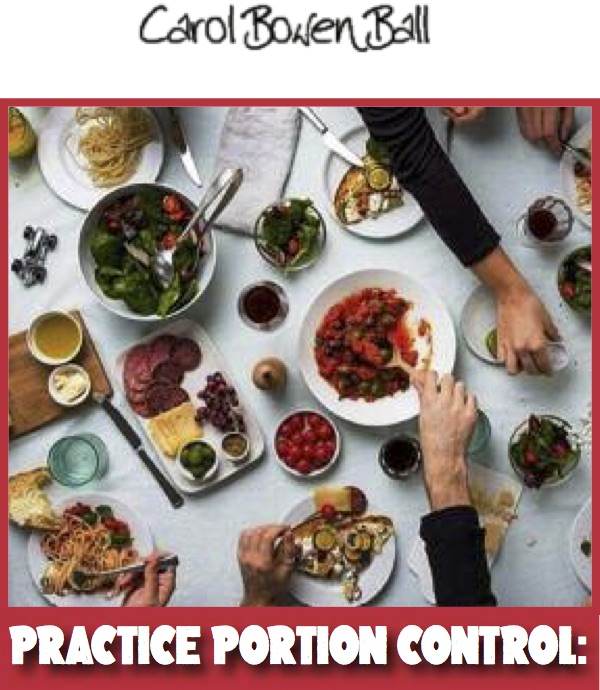
It’s important that everyone in the family practices portion control. Yours will be that advocated by the guidelines of your bariatric team, but in essence can also be seen on a professionally-endorsed bariatric portion plate. You will generally be advised to fill half your plate with lean protein, a quarter with non-starchy vegetables or salad, and a final quarter with complex or wholegrain starches (such as sweet potato, wholegrain pasta, lentils etc). This will be on a smaller plate than the rest of the family – usually the size of a side plate. In general this translates to 1/2 cup protein, a 1/4 cup of vegetables/salad, and about 1-2 tbsp carbs or starches. You will then also be encouraged to eat the protein and vegetables first.
Non-WLS diners can eat the same but the proportions and the portion size will be different. Most healthy eating regimes will suggest 1/2 of the plate to be non-starchy vegetables or salad, 1/4 lean protein and 1/4 wholegrain or complex starches. Quantities will be double or a fraction more than the WLS one.
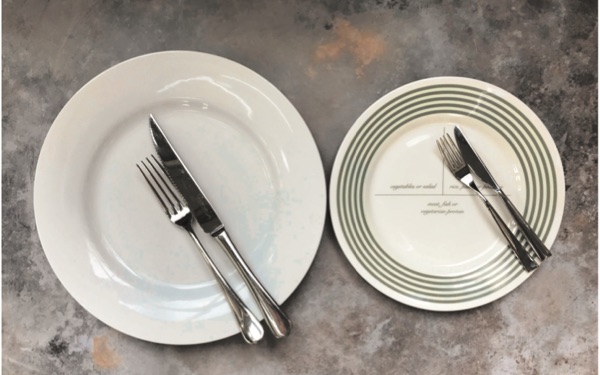 On a general note; 1 regular non-WLS portion usually translates as 2 x WLS portions I find, sometimes it can stretch to 3 depending on time out from surgery. This can be a useful conversion when you’re adjusting or adapting recipes so that you can calculate how many servings a dish or recipe will make.
On a general note; 1 regular non-WLS portion usually translates as 2 x WLS portions I find, sometimes it can stretch to 3 depending on time out from surgery. This can be a useful conversion when you’re adjusting or adapting recipes so that you can calculate how many servings a dish or recipe will make.
 Many WLS patients wrongly believe that they will be saying goodbye permanently to certain foods in their new post-op life. Often not so because substitutes exist for virtually every- thing – so ordinary rice (if you can’t tolerate it or don’t want to eat it) for example, can be replaced with cauliflower rice; traditional wheat pasta can be subbed with lentil, pea protein, bean-based or other higher-protein pastas; mashed for bean, cauliflower or root vegetable ones; and cream for yogurt, quark or other non-dairy substitutes. I use all of these in my recipes for dishes that become ‘fakeaway’ versions of popular family and take- out favorites.
Many WLS patients wrongly believe that they will be saying goodbye permanently to certain foods in their new post-op life. Often not so because substitutes exist for virtually every- thing – so ordinary rice (if you can’t tolerate it or don’t want to eat it) for example, can be replaced with cauliflower rice; traditional wheat pasta can be subbed with lentil, pea protein, bean-based or other higher-protein pastas; mashed for bean, cauliflower or root vegetable ones; and cream for yogurt, quark or other non-dairy substitutes. I use all of these in my recipes for dishes that become ‘fakeaway’ versions of popular family and take- out favorites.
 So, for example, take a typical family meal of Spaghetti Bolognese – follow the quantities recommended but have much more meat sauce than pasta and maybe replace the latter with vegetable spirals like courgetti/zucchini strips or veggie noodles. Add a little salad too, if liked.
So, for example, take a typical family meal of Spaghetti Bolognese – follow the quantities recommended but have much more meat sauce than pasta and maybe replace the latter with vegetable spirals like courgetti/zucchini strips or veggie noodles. Add a little salad too, if liked.
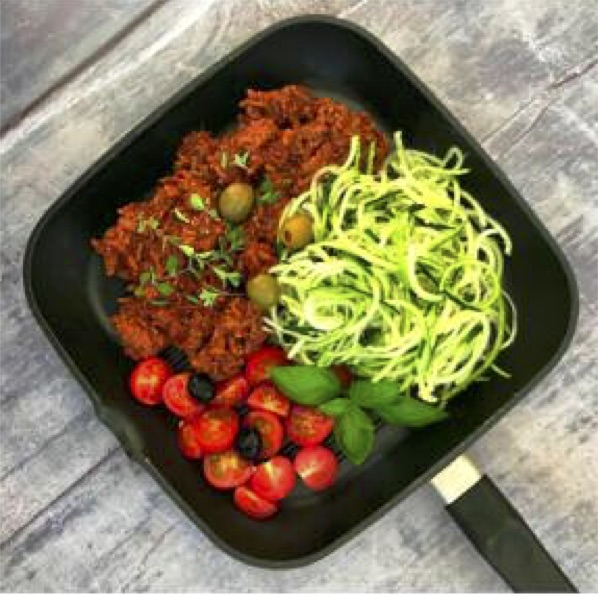 Likewise, Burger in Bun with Fries – ditch the bun or maybe half of it and wrap in salad leaves or use a cooked large flat mushroom as the base. If fries are a must then consider just a few sweet potato, celeriac or carrot fries made in the air- fryer or oven with low-fat cooking spray or mist.
Likewise, Burger in Bun with Fries – ditch the bun or maybe half of it and wrap in salad leaves or use a cooked large flat mushroom as the base. If fries are a must then consider just a few sweet potato, celeriac or carrot fries made in the air- fryer or oven with low-fat cooking spray or mist.
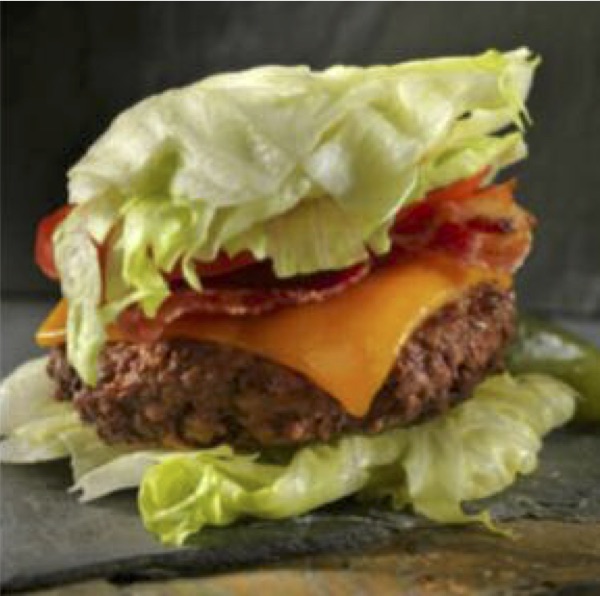 Consider too replacing ordinary rice with cauliflower rice in Salmon Skewers or BBQ Kebabs with Rice. Check out how to make it on https://www.bariatric cookery. com/cauli-power/.
Consider too replacing ordinary rice with cauliflower rice in Salmon Skewers or BBQ Kebabs with Rice. Check out how to make it on https://www.bariatric cookery. com/cauli-power/.
 If your enjoy noodles or pasta then why not substitute occasionally for a high protein one, veggie noodles or even zero noodles made from konjac. They make a great addition to Asian style meals like a Stir-Fry.
If your enjoy noodles or pasta then why not substitute occasionally for a high protein one, veggie noodles or even zero noodles made from konjac. They make a great addition to Asian style meals like a Stir-Fry.
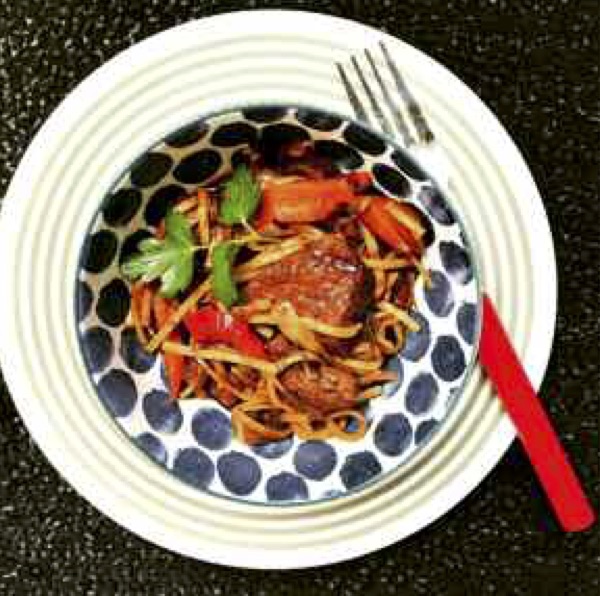 Sunday Roasts and special Thanksgiving Meals are ‘doable’ – just fill the plate with half lean roast meat and then add a spoonful of everything you wish to try and sample. You may not eat it all but won’t feel deprived in any way. It also stops the questions from other eaters about your participation in the celebration.
Sunday Roasts and special Thanksgiving Meals are ‘doable’ – just fill the plate with half lean roast meat and then add a spoonful of everything you wish to try and sample. You may not eat it all but won’t feel deprived in any way. It also stops the questions from other eaters about your participation in the celebration.
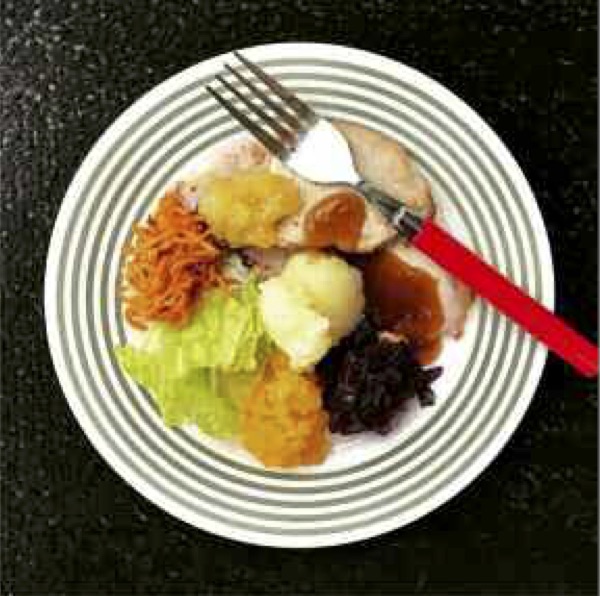 You don’t always have to serve traditional rice accompaniments to meals – for example replace the rice in your usual Chill Con Carne meal with cooked grains if you find them more manageable. They introduce a great nutty texture that is often less sticky and cloying in the pouch.
You don’t always have to serve traditional rice accompaniments to meals – for example replace the rice in your usual Chill Con Carne meal with cooked grains if you find them more manageable. They introduce a great nutty texture that is often less sticky and cloying in the pouch.
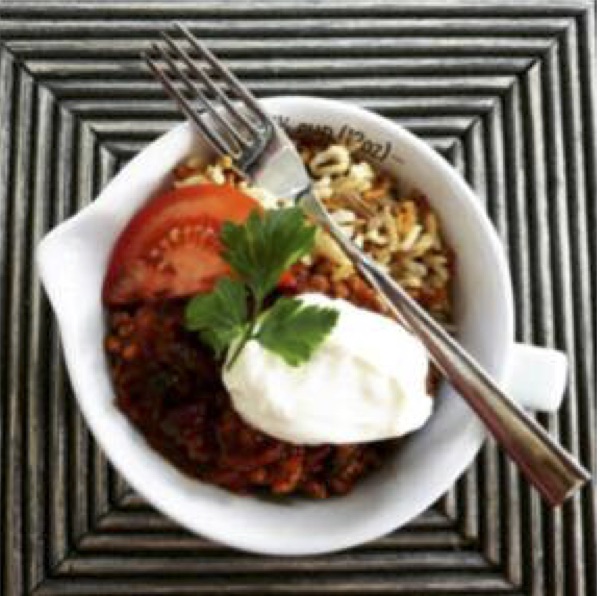 Another good substitute for a wrap is a wonton wrapper – the sort to use in Summer Rolls – a much lighter and lower calorie option than a corn tortilla or wheat-based wrap for a sandwich style or roll-up meal.
Another good substitute for a wrap is a wonton wrapper – the sort to use in Summer Rolls – a much lighter and lower calorie option than a corn tortilla or wheat-based wrap for a sandwich style or roll-up meal.

 If everyone is involved in the meal planning and cooking process it is more likely to be a success. So ‘buy-in’ to this mentality and make it work for you by chatting through food choices, shopping, prepping and serving so that everyone in the family has a vested interest. Check out family favorites, new recipes to experiment with, new foods to try, special themed meal ideas for interest (Mexican, Chinese, Indian or French for example) and ensure you’re not the one doing all the clean-up!
If everyone is involved in the meal planning and cooking process it is more likely to be a success. So ‘buy-in’ to this mentality and make it work for you by chatting through food choices, shopping, prepping and serving so that everyone in the family has a vested interest. Check out family favorites, new recipes to experiment with, new foods to try, special themed meal ideas for interest (Mexican, Chinese, Indian or French for example) and ensure you’re not the one doing all the clean-up!
Copy and Recipes © copyright of Bariatric Cookery (UK) Ltd






